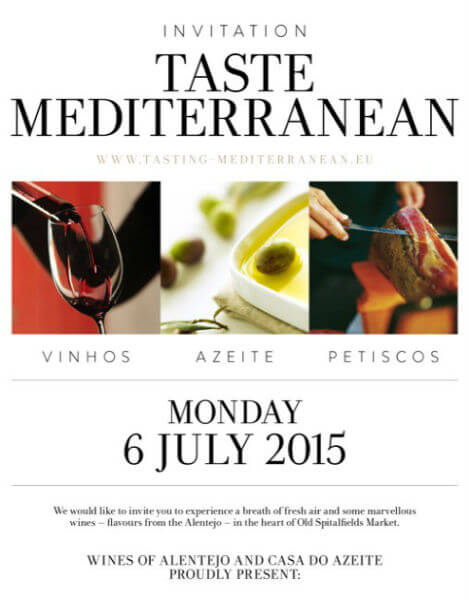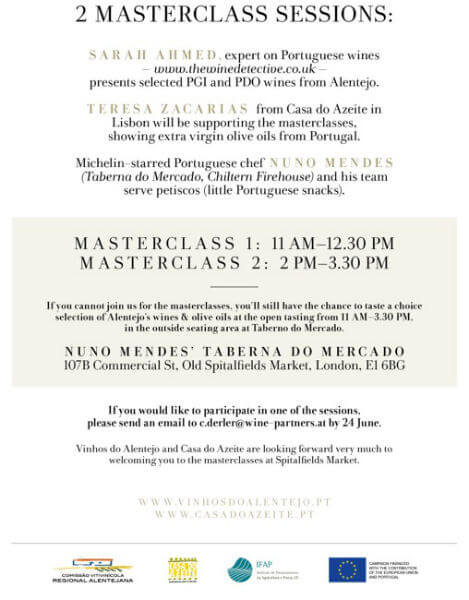Text Sarah Ahmed
When I showed them this photo, I’m not sure if my sommelier group was relieved or disappointed not to meet the owner of the Portuguese wine industry’s best curated moustache, Paulo Laureano. As one drily observed, “he looks shy.” In fact a little unhinged in this picture, though this is far from the truth – I can assure you Paulo Laureano is as poised as his wines or indeed the waxed tips of his moustache!

Paulo Laureano at the barbers – Photo by Paulo Laureano | All Rights Reserved
He could not personally show us his wines since the winemaker was in Brazil looking after his markets. But, when it comes to those made under his own label (he consults widely), his focus is squarely on home. Not just on native Portuguese grape varieties (including world’s only single varietal Tinta Grossa red), but also the region in which he was born, Alentejo.
Owing to this warm, dry, southerly region’s popularity with supermarket buyers, Alentejo is best known in the UK for soft, approachable, fruity (jammy even) reds. It is most definitely not known for its whites. So it came as something as a surprise for my group to discover that Alentejo’s southern-most DOC sub-region, Vidigueira, can produce such restrained reds and whites – the perfect foil for the fine dining experience their restaurants offer at London’s The Ritz, Gordon Ramsey’s Maze, Butler’s Wharf Chop House and Yauatcha, as well as Nuno Mende’s new Portuguese-focused small plates dining experience, Taberna do Mercado where I shall be presenting Alentejo wines to the trade next month.

I’ll be showcasing Alentejo’s wide range of styles at Taberna do Mercado next month – Photo by Wines of Alentejo | All Rights Reserved

I’ll be showcasing Alentejo’s wide range of styles at Taberna do Mercado next month – Photo by Wines of Alentejo | All Rights Reserved
How has Laureano conquered white winemaking so far south? When I first met Laureano several years ago he explained that, despite its location, Vidigueira’s special micro-climate accounts for this restraint and structure. Moisture levels are higher and the climate more temperate than you might think because, owing to its topography, Atlantic breezes still manage to wend their way some 60km inland. What’s more, Vidigueira benefits from higher rainfall because of the Serra do Mendro, from which cold air descends at night, cooling the vineyards. The cherry on the cake is the schist soils which characterise so many top Alentejo wines. Why? First, because these lean, rocky soils offer little in the way of nutrients to the vines, which keeps yields low. Second, because schist has the capacity to store and slowly “meter” water to vines (just like in the Douro). Now you know why Vidigueira has a history of white winemaking.
Here are my notes on Laureano’s wines which, I might add, I found fresher and more precise (especially the whites) than in the past. Partly down to earlier picking I am told.
Paulo Laureano Premium Vinhas Velhas White 2014 (DOC Vidigueira, Alentejo)
When I visited Alentejo this month, there was a lot of excitement about 2014 whites. This silver medal winner at Decanter World Wine Awards 2015 demonstrates why. Only part-fermented and aged in (French) oak for four months, the emphasis is on fruit and freshness. The acidity is a good counterfoil to its ripe, tropical-tinged citrus fruit (pink grapefruit, mandarin) and dried pear. Incidentally, Vinhas Velhas – old vines – means around forty years old here. 13.5%
Paulo Laureano Dolium Escolha White 2014 (DOC Vidigueira, Alentejo)
Dolium focuses on Vidigueira’s traditional lead white grape variety, Antão Vaz, which was aged for six months in French oak. While it shares the pink grapefruit, mandarin and dried pear of the Vinhas Velhas, this wine is more concentrated, pithily textural, structured and complex with nutty oak and mineral nuances. Poised, with a very well balanced, long finish. 13%
Paulo Laureano Premium Vinhas Velhas 2013 (DOC Vidigueira, Alentejo)
This deeply coloured blend of Aragonês, Trincadeira and Alicante Bouschet reveals juicy blackberry and blackcurrant fruit with savoury, leafy tobacco and raddichio notes. Dusty, schistous minerality lends freshness and nuance to the finish. Tannins (fine) and acidity (fresh) are very well balanced.
Paulo Laureano Selectio Tinta Grossa 2011 (DOC Vidigueira, Alentejo)
According to Paulo Laureano’s Brand Manager Diana Silva, there are only five hectares of Tinta Grossa worldwide, of which Paulo Laureano has three. Probably because it’s a low yielder and a bit of a tricky customer in the vineyard. This wine has only been made in 2008, 2011 and 2012. The grapes are small and thick skinned, which is readily apparent in the tannin structure of this inky wine and the fact that it mops up its new French oak with ease. The nose puts me in mind of Lagrein (a northern Italian red grape/wine), with its bitter chocolate, violets, sour cherry/plum, balsamic and raddichio notes. Notes which follow through on the palate, together with rhubarb, wild brambly fruit, lavender, membrillo/beeswax, clove, cassia bark and Bassatt’s Liquorice Allsorts jelly spog aniseed notes. The tannins are sinewy and a little rustic in a good way and it finishes firm, dry and savoury. A very complex, individual wine. Silva recommends it pairing it with Carne de Porco à Alentejana – pork and clams with fried potatoes (it cuts through the fat).14%
Paulo Laureano Dolium Reserva Red 2012 (DOC Vidigueira, Alentejo)
This Trincadeira-led (70%) blend (with Aragonês and Alicante Bouschet)is matured in French and American oak for 18 months, It has a mocha edge to its dark but juicy fresh picked berry, currant and sloe fruit with hints of clove. Like the other reds there’s not an iota of jamminess. Nice length and balance, wih fine tannins.
Contacts
Monte Novo da Lisboa
Selmes- Vidigueira
7960-909
Tel: (+351) 284 240 991
Fax: (+351) 284 437 069
E-mail: geral@paulolaureano.com
Website: www.paulolaureano.com




Leave a Reply